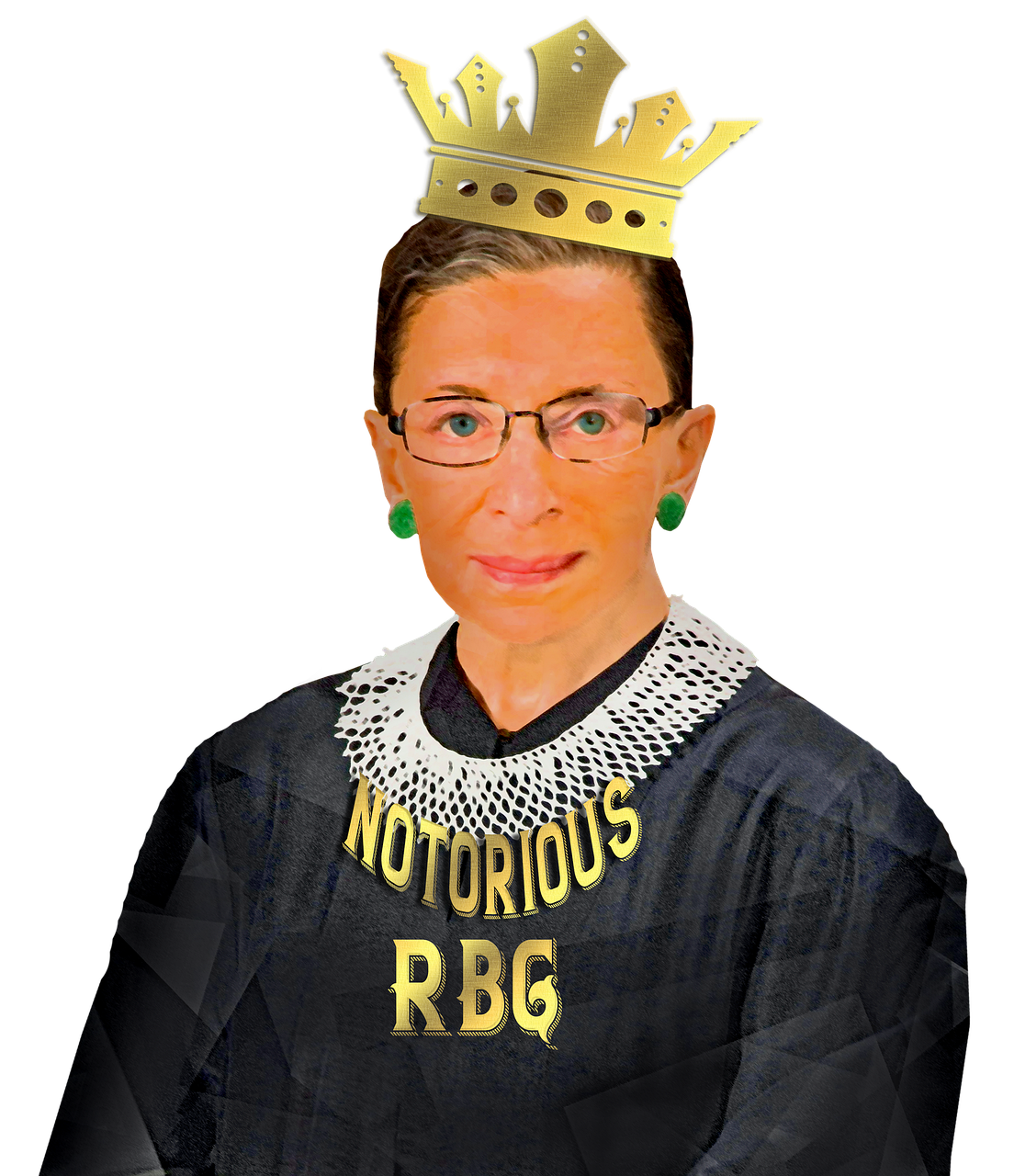A pioneering attorney, lifetime advocate of gender equality, and a civil servant, Justice Ruth Bader Ginsburg is known for her 27 years of service in the U.S. Supreme Court. President Bill Clinton nominated her to the top court in 1993. Additionally, she is also the first Jewish woman and the second woman to serve in the SC in the history of the United States.
Ruth’s unwavering confidence and desire to compromise throughout her career changed the public’s perception of women in leadership positions. Meanwhile, she also demonstrated how a Supreme Court justice should work. While working as a justice, Ruth gave some landmark rulings. These include the United States vs Virginia, Olmstead vs L.C., Friends of the Earth vs Laidlaw Environmental Services, and more. The rulings revolved around issues of women’s rights, environment, and social issues, among others.
Justice Ruth Bader departed from us on September 18, 2020, at the age of 87. Ruth’s death marked the end of an era for a court that will forever be affected by her freedom of speech and dedication to judicial retention. She died of cancer but her thoughts and opinions, etched in the 21st century, will live on.
If you are among those people who receive inspiration from Justice Ruth Bader Ginsburg, you have just popped into the perfect place. This article tries to chronicle her journey. Knowing about her life before she became a cultural icon is crucial as her life is the foundation for the pop icon image we might have of her.
Short bio 0f Justice Ruth Bader Ginsburg
Early life, family, education
Ruth Bader was born on March 15, 1933, at Beth Moses Hospital in Brooklyn, New York. She got the name Joan Ruth Bader at birth. But, Nathan and Celia Bader started calling their second daughter Ruth to avoid confusion as other children shared her first name Joan at school. Both of Ruth’s parents were Jewish. Although Ruth was born as a second daughter, she grew up as her parent’s only daughter. Her sister Marilyn died due to meningitis at the age of six.
Growing up, Ruth’s mother influenced her tremendously to pursue higher education. Particularly, Ginsburg’s early memories of her include going to the library and bargain shopping so the family could save money for her education. Ruth’s mother, Celia — though exceptional in studies — couldn’t fulfil her dream of being a scholar due to her family’s poor finances. With that guilt, Celia highly motivated Ruth to gain education and dreamt of making her a high school history teacher. Unfortunately, Celia died of cervical cancer a day before Ruth‘s high school graduation.
Nevertheless, Celia’s influence continued as Ruth successfully established herself as a high achieving student at Cornell University. She earned her bachelor of arts degree in government on June 23, 1954.
Exchange of vows with Martin David Ginsburg
Soon after graduating from Cornell University, Ruth exchanged the vows with Martin David Ginsburg. During the time, Martin was as a U.S. Army Reserve at Fort Sill, Oklahoma. They had met at Cornell University in the course of their studies. After serving in the US Army, Martin later became a globally known tax lawyer at Weil, Gotshal & Manges. Notably, Martin suffered from testicular cancer after their marriage and recovered later.
First experience of gender discrimination during pregnancy
Ruth Badger was survived by two children, Jane, and James Steven Ginsburg. Meanwhile, Jane (b.1955) is a professor at Columbia Law School. And, James (b.1965) is the founder of a classical music recording company based in Chicago.
She was pregnant with her first child (Jane) at the age of 21. At that time, she worked at the Social Security Administration office in Oklahoma. Initially, the job assigned for Ruth was a GS-5 level, but after she mentioned her pregnancy she was given a GS-2 job as a typist. This was her first experience of gender inequality.
At that time, there wasn’t any law to protect pregnant women. However, the only way to escape from the issue was to hide the pregnancy. Later, after 10 years, Ruth was in a similar situation when she unexpectedly got pregnant. In the meantime, she borrowed baggy clothes and kept her pregnancy a secret, eventually saving her job.
Mocked for being a woman at Harvard Law School
After her husband had completed his military service, the couple enrolled in Harvard Law School. In the school, she was one of only nine women in a class of over 500 students. At Harvard, Ruth was ridiculed by professors for being a woman and even barred her from accessing library materials that were stored in a male-only room.
Later, after her husband graduated a year ahead of her and she transferred to Columbia University. Eventually, she completed her class at Columbia Law School, receiving a J.D. degree in 1959. However, only the degree wasn’t enough to get a reputed job as a woman and a mother. Nevertheless, it was the start of her journey of being Justice Ruth Bader Ginsburg.
First job as clerk of Judge Edmund L. Palmieri before being Justice Ruth Bader Ginsburg
Despite struggles, Ruth eventually got the opportunity to work with Judge Edmund L. Palmieri. Palmieri was a justice in the United States District Court. With that experience, she got the opportunity to work on the Columbia Project on International Procedure. Later, she worked as the faculty of Rutgers University and in its ACLU Women’s Rights Project, Columbia Law School, and many others.
Fight against gender discrimination
While already having faced gender discrimination multiple times, Ruth became vocal on the issue of gender discrimination. She was first involved in this issue when the New Jersey branch of the ACLU handed her a case. She won a case involving a man who intentionally appointed a male instead of female. The achievement gave her the chance to take the lead role at the newly founded ACLU Women’s Rights Project. With success, she co-founded the project in 1972 and also became the first woman to work at Columbia Law school.
After that, she began to work on the Equal Protection Clause to attack gender discrimination. In her entire career, Ginsburg argued over 300 gender discrimination cases and appeared before the Supreme Court six times. Her notable victories include the claims that provided equality in governmental benefits for people who had served in the military.
Justice Ruth Bader Ginsburg in the Supreme Court
Ruth Bader was appointed as a justice of the Supreme Court in 1993 by Bill Clinton. Additionally, her stint as a justice came just after working at the Court of Appeals for the District of Columbia Circuit. Particularly, she had been appointed to the Court of Appeals in 1980 by President Carter. Working for 27 years as a justice, Ruth Bader Ginsburg was driving forward to solve the gender inequality issue in the country.
Her first notable work as justice was authoring the Court’s opinion in the United States vs Virginia (1996). She successfully struck down the Virginia Military Institute’s male-only admissions policy. Similarly, Ginsburg disagreed with the opinion of the court on Ledbetter vs Goodyear (2007). The litigation involved the complainant Lilly Ledbetter, who brought a lawsuit against her employer, alleging wage disparity based on her gender.
With immense effort, Ruth was able to empower women to raise their voices in the male-dominant field, especially in the case of pay disparity. Many of the women had no idea of the issue until Ruth was vocal about establishing gender equality. To settle the issue of gender inequality, Justice Ruth Bader Ginsburg called on Congress to amend Title VII to undo the court’s decision with legislation.
As a result, the effort eventually registered the Lilly Ledbetter Fair Pay Act as a law of the United States, after the election of President Barack Obama in 2008. In particular, the law is the weapon for female employees to win pay discrimination claims. Besides, apart from gender inequality, she also worked on the issues of abortion rights, search and seizure, international law, voting rights, and affirmative action, among others.
Criticism
Despite good work, Ruth was also in some controversy. In particular, in her entire Supreme Court tenure from 1993 to 2020, just one African-American clerk was employed. Additionally, she never hired an African-American clerk, intern, or assistant during her 13 years of work. The allegation was during the time when she was working at the United States Court of Appeals.
Justice Ruth Bader Ginsburg emerges as pop culture icon
Ginsburg is also popular as a pop culture icon, which is quite unusual for the Supreme Court’s justices. Her fiery nature led to the formation of an internet meme on Tumblr, The Notorious R.B.G. The meme was viral on the internet that compared her with the rapper The Notorious B.I.G.
Ginsburg was given the nickname in 2013 after the Supreme Court invalidated a key part of the Voting Rights Act. In particular, Shana Knizhnik, a law student at the time, set up a Tumblr account honouring Justice Ginsburg after her unforgettable work in Shelby County vs Holder, a voting-rights case.
Meanwhile, after succeeding in the case, her fiery dissent: “throwing away your umbrella in a rainstorm because you are not getting wet” caught wide attention. And overnight, the face of Justice Ginsburg was plastered on posters, memes, and t-shirts. More specifically, she continued inspiring the younger generation.
With this, Tumblr meme’s popularity reached the next level that went trending on the internet. Eventually, the hype inspired the blog creator to turn the blog into a book. And the name of the book was titled: Notorious R.B.G.: The Life and Times of Ruth Bader Ginsburg.
Ruth Bader influence on television
The American actress Kate McKinnon has been hosting Ruth on Saturday Night Live since 2015. To be specific, the actress portrayed the justice in the 2012 skit that inspired her to feature Ruth’s character on the “Weekend Update” segment of Saturday Night Live.
Likewise, Ruth’s attitude led her to be the star of the 2018 Oscar-nominated documentary, R.B.G. The documentary sketched out her relentless struggle for the rights of women and minorities. Similarly, months after “R.B.G.” hit theatres, a biopic named On the Basis of Sex was on the wheels. The drama, featuring Felicity Jones and Armie Hammer, portrayed the early days of justice as a lawyer trying to secure a career.
Besides them, many other movies have taken the character of Ruth, symbolizing her as a powerful woman. Particularly, movies and sitcoms portraying Ruth’s character include Deadpool 2 (2018), New Girl, and others.
For more keep following, Wikye.com









